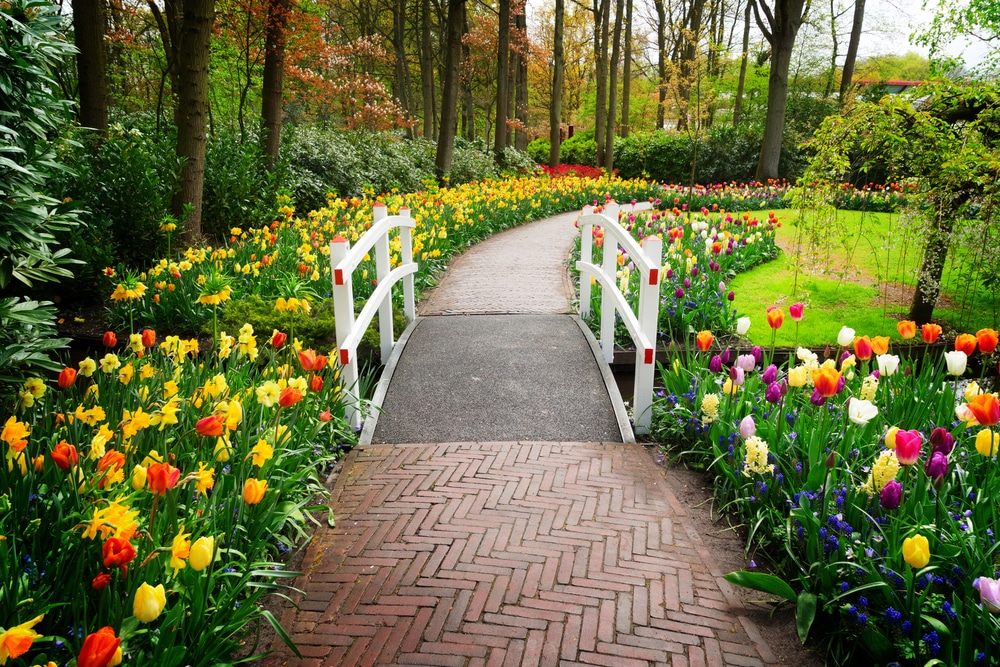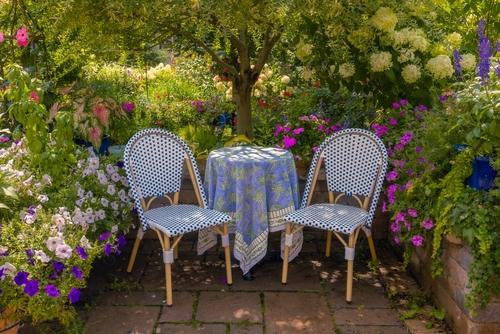If you enjoy crisp lines of flowers and intricate paths, a formal flower garden might be for you. Standard gardening principles still apply, so you must consider how much sun an area gets and prepare the soil so your flowers flourish. Here are some tips on creating a formal garden.
Graph Your Space
Start by creating a scale drawing of the space you are landscaping. Draw in the hardscapes and other fixed items, like the house, outbuildings, easements, boundary lines, and other things that can’t be moved. The result helps you visualize the spaces you have for plants and where those spaces are in your landscape.
Inventory Sunlight and Soil Conditions
Make notes on sunlight, soil moisture, and soil condition for each space you want to develop. Most flowering plants need at least 6 and ideally 8 hours or more of sunlight to flower. If you have partial or deep shade, you must grow plants that like such conditions. These plants tend to be chosen for texture and form since flowers are usually small and inconspicuous in the shade.
Include Symmetry
Formal gardens need a balanced design. Plants are arranged on either side of a path, and these beds mirror one another, creating a symmetrical garden. The symmetry helps the landscape flow and naturally directs people through the garden. Repeating the same shapes enhances symmetry.
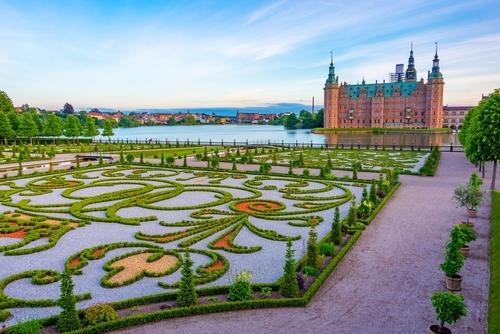
Evergreens Anchor the Garden
Hedges and borders of evergreen plants define and anchor the landscape in a formal garden. Topiaries can act as centerpieces or on the corners. Because boxwood blight is a problem, yew, holly, hornbeam, or rosemary can be used for healthy topiaries. Hedges with interwoven branches, or pleached, become thick and serve as barriers and sentinels. They also act as windbreaks for more tender plants.
In Europe, peached hawthorn hedges were used as fences to keep livestock in and predators out. Osage orange trees were used the same way in north central Texas and Oklahoma.
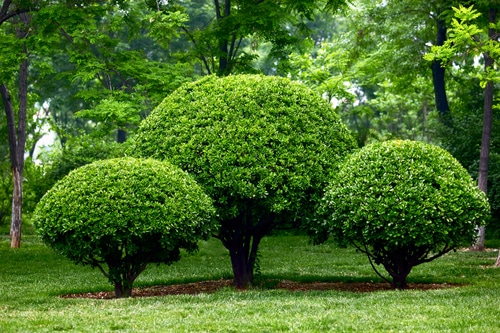
Install a Parterre
A parterre is a geometric garden in a flat area near the house. It consists of low evergreen hedges, flowering plants, and gravel areas separated by pathways. The hedges can be laid out in a labyrinth, maze, or geometric shape. The parterre was a place to see and be seen. Architects considered the view from the inside of the house and the balcony on the second floor as much as the view from outside the house when designing a parterre. A classic parterre garden has strong, simple, repetitive shapes in it.
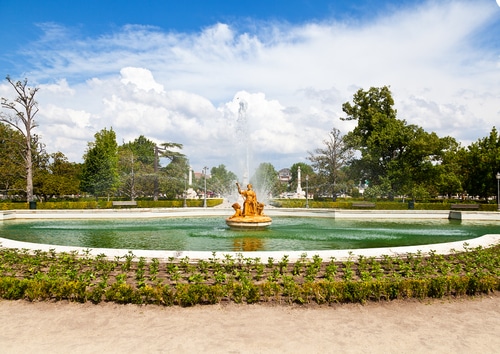
Line Borders with Looser Plantings
Using the outside edge of the formal garden to grow a wild garden of flowering plants can soften the transition from the formal garden to more informal gardens. You can let wildflowers grow there or choose specific perennials and annuals. Plant flowers that bloom from early spring to first freeze to attract birds, butterflies, and bees. These creatures can add color and joy to your gardens.
Choose Simple Color Schemes
Formal gardens usually employ simple color schemes in green, white, or muted pastels. While there are formal gardens with brighter color schemes, most brighter colors were reserved for the more informal gardens further from the house. Using repeated colors and masses of plants adds to the formality of a garden. Pastels mixed with different green colors create a soothing area in which to relax. For example, use white, light blue, and lavender plants in your flower beds for a soft, gentle look.
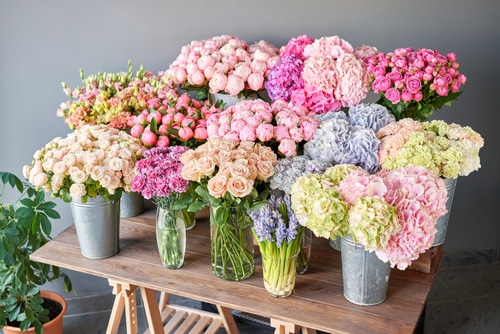
Path Materials
Formal gardens have paths running through them so people can admire the plants in the garden. The type of material used for the paths needs to match the house. It doesn’t have to be identical but should not clash. Brick pathways and natural stone pathways were traditionally used for paths. Reclaimed brick pathways are cheaper and a good way to recycle materials no longer needed in their original home. Using crushed stone that matches the house’s color is a way to update the paths without disturbing the garden’s formality. The blended color of the stone unifies the garden and the home.
Focal Point
Formal gardens usually have a focal point such as a water feature, fountain, or sculpture. The gardens are designed to lead to the focal point. Think a circular garden with a fountain at its center. Paths lead out from the fountain as spokes on a wheel. Evergreens frame geometric shapes filled with flowering plants. The outer circle is framed by evergreens, creating a wheel rim. Outside of that hedge, informal gardens are much less structured. A kitchen garden of herbs and vegetables surrounds the outdoor kitchen.
Seating
Formal gardens have benches and other seating in nooks where people can sit and watch the birds and insects fly around the garden. Choose stone benches for a classic formal garden. More modern seats of wood or steel will update the concept.
The scale of the Design
While the formal garden originated on plantations or estates with lots of land (and servants to keep it looking tidy), smaller-scale designs will work for any size area. Smaller designs need to have proportionately smaller flower beds. Evergreens can be trimmed shorter to keep from overpowering the landscape. Paths, however, should still be at least a meter wide to be easily navigable. Don’t use as many different species of plants or as many colors to avoid having a garden that is too busy for the size.
Choosing Flowering Plants
As mentioned, most formal gardens start with evergreen plants defining the paths and flower beds. The flower beds are filled with plants with soft-colored flowers. Using perennials such as white violets, bird’s foot violet, and blue vervain decreases the maintenance needed to keep the beds looking good. You must still prune the evergreens to keep them from getting too big or looking ragged. Unless, of course, if you have many servants to keep the garden up.

Tammy Sons owns TN Nursery, a leading online plant nursery specializing in native plants, trees, and perennials. With deep-rooted expertise in horticulture and a passion for sustainable gardening, she shares insights on plant care, landscaping trends, and conservation.

